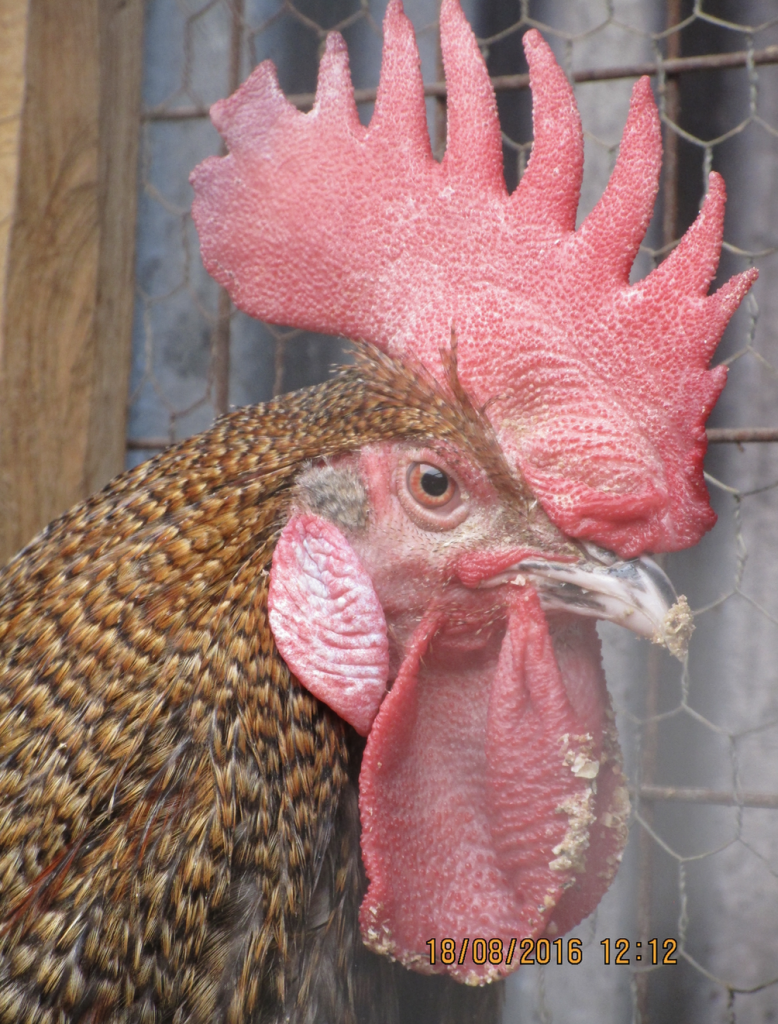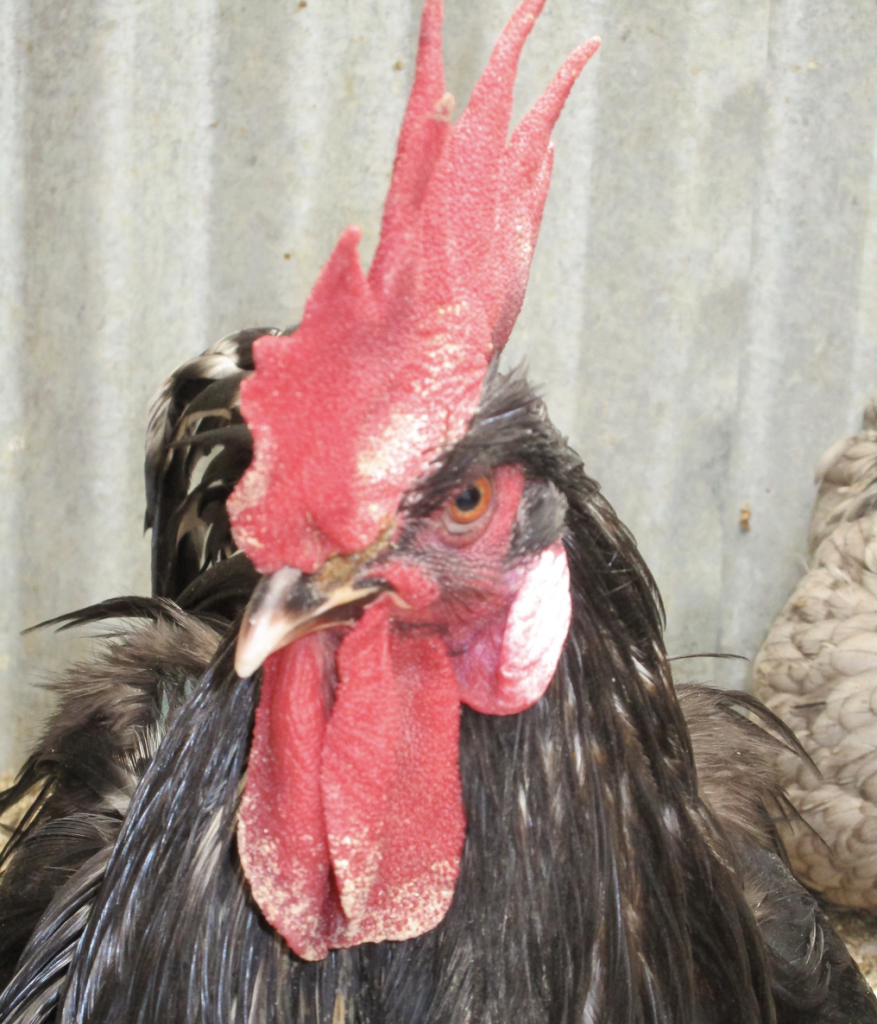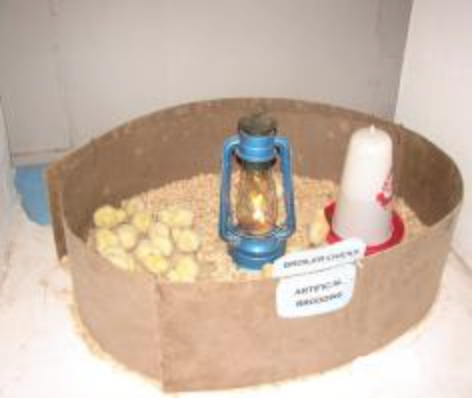Breeding
Credit: Biovision-Infonet

Introduction and management of cocks
Introduce one new cock for every 10 hens every two years, in order to avoid inbreeding. Improved indigenous chickens for improving the local breeds can be bought from Naivasha research station in Kenya as well as from private breeders.

Brooding hens and cycle
In the village setting care must be taken to protect brooding hens from predators, rodents and other forms of stress. If a brooder hen is well protected and comfortable she can easily hatch 15 eggs per sitting. A brooding cycle takes minimum 18 days after which the first eggs should start hatching. The mother will normally keep the chicks with her for a day or two before taking them to food and water. Any eggs not hatched after this will go cold and most likely not hatch. It is highly advisable to keep food and clean water available near the brooding hen during this whole period for her to hatch the maximum amount of chicks.
Selection of eggs for setting
When a hen is broody, she will start laying an egg every day. If she should have a clutch of chicken hatched at about the same time, the eggs are removed from her and carefully stored until there are enough for a whole clutch. Then they are all carefully placed in the nest so that she can sit on them until hatching. A improved nutrition can raise the average quantity of eggs laid per clutch by 100%. For a successfull hatching, the eggs must be handled carefully from laying till setting. Eggs should be stored with the broad end facing upwards, as at this end there is an air sack, through which the egg breathes. Eggs should be stored in a clean and dried place to prevent rotting. Since fertile eggs grow slowly, eggs older than 14 days should not be used for hatching.
Shortening of the reproductive cycle
By shortening the reproductive cycle, hens lay eggs earlier and double the number of clutches per hen per year. Improved management increase the survival rates of the chicks. Shortening of the reproductive cycle can be achieved by better feeding, protection from predators and rodents, timely vaccinations and (if relevant) deworming, control of external parasites, and culling of aggressive and unproductive birds.
Serial hatching
Since fertile poultry can be used to sit on eggs continuously for two or more times by removing the chicks every time they hatch and replacing them with new eggs. Ducks can sit on 30 to 35 eggs and can be used for up to six consecutive times. In an organic farm, it is important to think about fairness in this situation, and let the hen have their offspring with them. Combining serial hatching with synchronisation (see below), more chicks will be able to hatch without using an incubator. Turkeys are also excellent chick brooders and can raise up to 50 chicks at the time. The rest of the procedure in introducing a cock for every 10 hens and the selection of the eggs is the same as with non-serial hatching.
Synchronised hatching
It can be an advantage to have more clutches of chicken hatched on the same days, because it fits well with feeding and vaccination etc., and maybe also with selling the chicken later. When hens that started laying within the same week get brooding, the first hen to reach this stage can be delayed by being given one egg to sit on. This will be repeated for the second and third hens, so that all the hens are set on one day. By the time of setting, all ‘dummy’ eggs should be destroyed. The time between the first hen and the last should not be more than one week. Again, in an organic farm, it is important to consider naturalness and fairness also in this situation.
Brooding of purchased hybrid day old chicks Before buying the young hybrid chicks, an appropriate brooding area needs to be prepared:
Day old chicks need to be kept warm at all times. As they grow and the feathers start to develop they tolerate cold better. At the same time they need to access feed and clean water at all times as they feed with short intervals.
Brooder Preparation
- Use hard boards to make a brooding ring of 60 cm height
- put at least 5 cm of clean dried grass/leaves (litter) on the floor inside the brooding ring
- Start with a density of 50 chicks per square metre
- A hover/cover should be provided about the brooder, to reduce heat wastage
- Make space for feed and water feeding equipment inside the brooder ring
Brooding of the broiler chicks is similar to that recommended for layer chicks, but the feed is different. Make sure feeds are bought as recommended.

(c) A. Wachira, KARI, Kenya
Heat Sources
Charcoal Jiko – one is enough for 500 chicksKerosene lamps – one lamp for 50 chicksElectricity – one infra red lamp for 250 chicks
Temperatures
Temperature above the floor should be kept at 32deg C for the first week, and then lowered by 4deg C for each week up to the 4th week.Observe the reaction of chicks to the heat:At correct brooding temperatures, chicks are evenly spread within the brooder ring At low temperature they crowd around the heat source At high temperature the chicks will move away from the heat source

(c) A. Wachira, KARI, Kenya
Other Conditions
- Fresh air and light should be allowed in the brooder but no drift.
- The litter in the brooder should always be dry.
- Clean and disinfect brooder areas 1 to 2 weeks before bringing in new chicks.
- Beware of brooder fires. Take precautions when using charcoal Jikos
As soon as the day old chicks arrive on the farm it is a good idea to make sure each individual bird gets to drink fresh clean water. They can be dehydrated from travelling. Then release them into the warm brooder ring. Show a few of the chicks where the feed is and the others will learn by example.